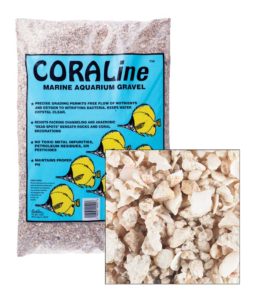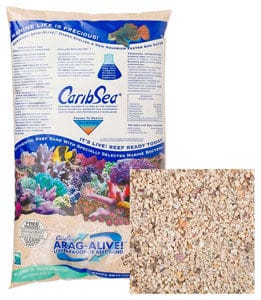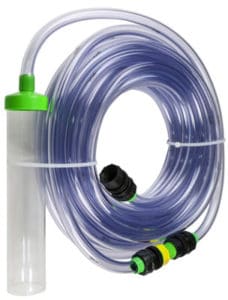You have been to the fish store or have been perusing the online photos and drolling at some of those incredible aquariums and there is one thing they all have in common, a pristine sandbed.
You look over at your aquarium and its a dull, algae-covered mess! You want that pristine sandbed! I know I did when I first started!
Suggested Ways To Keep a Reef Tank Sandbed Clean:
- Algae Nutrient Control
- Stirring
- Sand Vacuuming
- Increased Water Flow
- Snails
- Starfish
- Conch’s
- Diamond Spot Gobies
Each one of these has its caveats so let’s look into each one and also a few other things to consider.
Visually Clean Vs Biologically Clean
Sandbeds need to be clean on two fronts:
- Visually clean to enhance the beauty of your aquarium. A grotty looking sandbed can really make a dent on the impressiveness of your aquarium
- Biologically clean to ensure you do not have problems with high Ammonia, Nitrate, and Phosphate
The methods mentioned soon will be able to take care of both these situations but it is important to know that both types of clean play a major role in the overall health of your aquarium and how much work it may create for you.
Algae Blooms
If your aquarium is under 6 months old and you are having algae growing all over your sand then don’t worry, it is just part of the ecosystem trying to establish equilibrium.
Algae blooms appear when there is an abundance of food FOR the algae to feed on. Phosphates and Silicates are two of the major foods for Diatom Algae, CyanoBacteria, and Dinoflagellates. these will pass with time but during their presence, they can make your tank look really bad!
Slowly adding a CUC (Clean-Up-Crew) after your aquarium has cycled will help to keep your tank clean – Be sure not to add a huge amount of critters to clean up your algae blooms as once the algae has gone, they will starve!
For more information on Algae please see the ‘Further Reading’ section at the end.
What Type of Sand Can Be Used in Aquariums?
The type of sand or substrate you have in your aquarium can also play a role in how clean it looks. Larger particulate substrate like CaribSea’s Crushed Coral has grains 2.0-5.0mm in diameter which can leave larger pockets for uneaten food and detritus to settle in.
Larger particle sands can also be too large for some of the livestock we are going to talk about to effectively move through and clean.
Smaller particulate sands like CaribSea’s Fiji Pink and Special Grade Reef sand have grains 0.5-2.0mm in diameter which tends to allow junk to settle on the top rather than get trapped. The smaller grain sizes also allow critters to clean it easier.
CaribSea’s Fiji Pink is one of the most popular sands in the hobby and it is the sand I select for many clients aquariums and my own – It’s very easy to keep clean.
Depth of Sand
Although not as popular nowadays, but Deep Sandbeds was the norm 20 years ago as this was the main area to colonize aerobic and anaerobic nitrifying bacteria.
Deep Sandbeds were never to be touched as Hydrogen Sulphide gas could be present in the very lower parts of the sandbed. Disturbing the sand and releasing this gas almost always leads to the death of your inhabitants.
Today, however, the evolution in technology has made the need for a Deep Sandbed not required. A shallow sandbed of 1″-3″ of sand depth is now the norm and this is not deep enough to provide areas for anaerobic bacteria to colonize and produce Hydrogen Sulphide gas.
The regular stirring up and vacuuming of today’s sandbeds can be done without risk.
What Are Ways to Keep Aquarium Sand Clean?
Like most aspects of this hobby, a multi-angled approach will work far better than relying just on one animal or maintenance task. Here are some of the best ways to keep your sandbed clean:
Flow
Increasing the flow in your aquarium is usually one of the simplest things to do. You can either adjust the powerheads and wavemakers you currently own or add another. The trick is to keep the water moving over the sandbed and not allowing any dead spots. This will help to keep detritus, uneaten food, and fish excrement from settling on the sand.
If it settles on the sand it can be left to break down and raise your Ammonia, Nitrate, and Phosphate levels. Keeping the waste in suspension will allow it to be passed to your mechanical filtration for removal.
Increasing flow around your sandbed can take some playing with as using smaller grain sand can cause it to blow around like a sandstorm, but with patience, you can find the right positions and settings.
One thing to be aware of as your tank matures and your corals grow is that they can prevent flow and cause dead spots. If you notice you are having detritus settle in one spot or you get algae growing in a certain area, you can be sure the coral’s growth has impeded flow.
More powerheads or an alternate type of flow creator may be required.
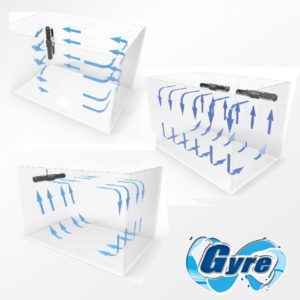
Gyre Wavemakers are great for helping to reduce flow dead spots due to the laminar flow they create throughout your entire tank.
For more information on the different types of powerheads, wavemakers and pumps that are available see the ‘Further Reading’ section at the end.
Stirring & Vacuuming
Moving the sandbed around allows any trapped particulate matter the chance to be picked up by the flow and sent to your mechanical filtration.
A good habit to get into from day one and a habit that I religiously practice is to stir up my sandbed and vacuum it with every water change.
A simple vacuum like the Python Gravel Vac will remove so much junk each week, it’s just like vacuuming your carpets at home.
With regular vacuuming, you will be able to keep any waste from settling and breaking down. It does not take long to do but your sand will be cleaner and your aquarium will be far healthier for it.
This is one process I highly recommend you do every time you change your water! Blasting your rocks with a turkey baster just before you vacuum your sandbed will help to get the junk out of them too 😉
Snails
By far the best snail for keeping your sandbed clean is the Nassarius Snail. These guys spend most of the day in the sandbed with the snout poking out of the sand waiting to smell food.
Once they smell food they all seem to appear out the sand like a scene from Michael Jackson’s ‘Thriller‘ video – Showing my age now!!
They are mainly nocturnal and plow through and on top of the sandbed searching out detritus and waste.
They are a great snail for stirring up the sandbed and the best thing about these guys is that they can use their snout to rite themselves if they get knocked over.
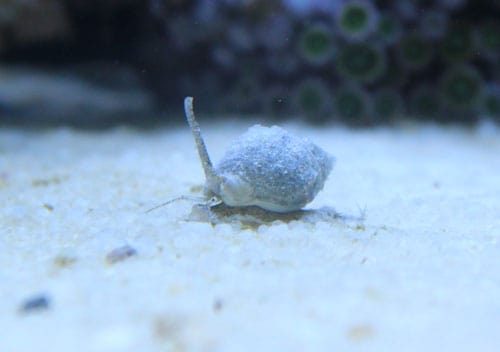
These are not a snail to add straight after your aquarium has finished cycling as they will have no food, but once you have some fish and you are around the 6 month mark, having 1 for every 10 gallons is a great starting point!
I love mine!
Conch’s
Conch’s are a funny-looking character that brings an interesting conversation starter to your aquarium. They are fantastic sandbed janitors spend all their time cruising through and over your sandbed, just like the Nassarius Snails.
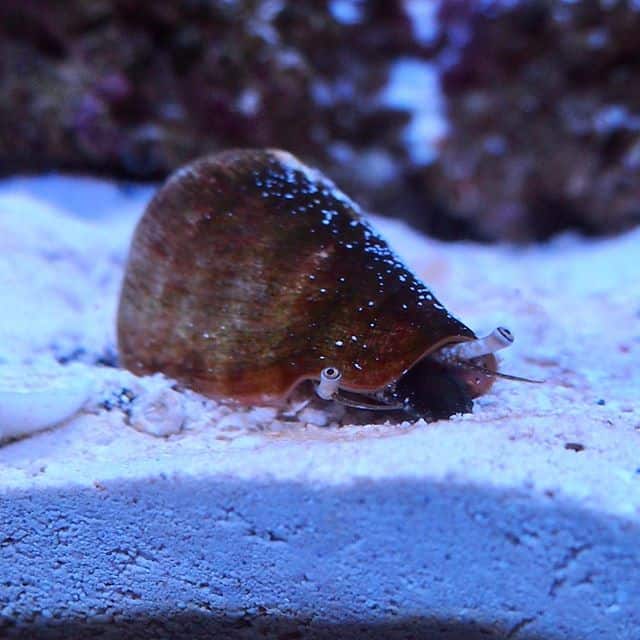
They are an easy herbivore to keep and can disappear for weeks on end if you have a large enough and deep enough sand bed. Just as you start to worry, they pop out to say “Hello”!
The Tiger Conch is the most popular in our hobby and you should be able to find them in most reputable fish stores or online retailers.
Also, like the Nassarius snail, do not go and introduce these until your aquarium is mature enough for them to have food in the sandbed or they will starve.
Starfish
As a beginner, I have to advise you AGAINST buying a Starfish or SeaStar for keeping your sandbed clean. The most common Starfish sold to clean sandbeds is the Sand-Sifting Starfish.
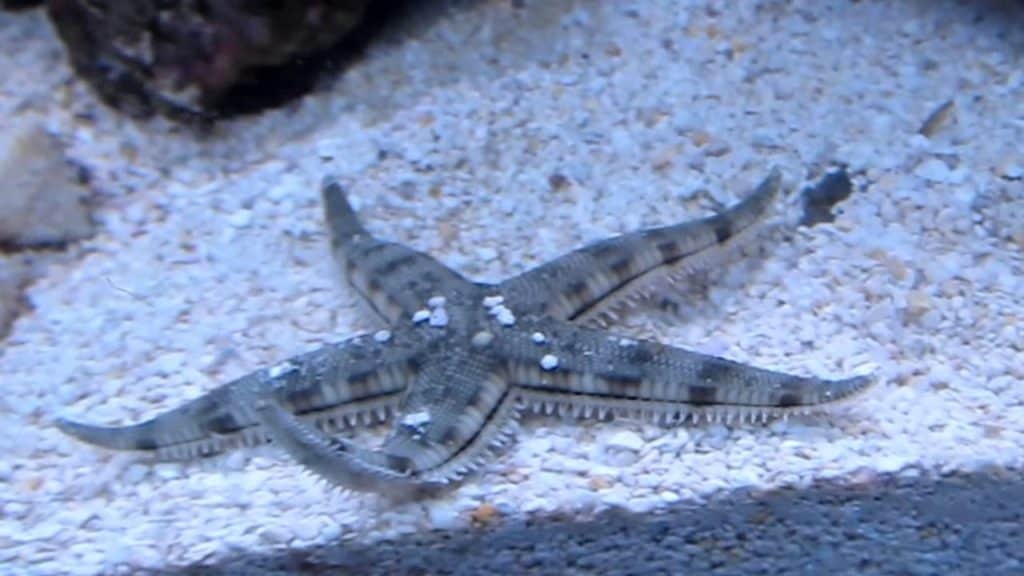
These poor guys have such a high mortality rate in home aquariums because they have a ravenous appetite. To be able to meet the needs of these Starfish the owner needs to have a large aquarium with ALOT of food within it.
These Starfish spend most of their life buried in the sand and once their food source depletes they will starve and die somewhere in your sand where you may not find them. They are also a big organism so once it dies it is going to cause your parameters to rise.
Even though they may look cool, just stay away from them.
Diamond Spot Goby
The last one of the sandbed janitors and aquarists have a Love/Hate relationship with this fish! The Diamond Spot or Orange Spot Goby is one of the hardest working fish in your tank!
This is all they do – sifting your sand through their gills. This is where the substrate size I mentioned earlier comes into play. Too big a grain size and he will not munch it.
The reason why they create a Love/Hate relationship is they can be a great tank mate or a royal pain in the butt. Mine is a model citizen, my friends fish drives him nuts and here is why:
- They can swim up into the water column and eject the sand grains – Covering your coral
- They are prolific jumpers if startled – Keep close-fitting lids on your tank
- They can terrorize other sand-dwelling inhabitants
If you can find one that behaves, your sand will never be cleaner! They are by far the best sandbed cleaner in our hobby, but just be prepared to get out the turkey baster or find them dried up on the floor!
To Finish
Keeping your sandbed clean is an easy process once you have the right maintenance habits and a few aquatic helpers to do their part! A clean sandbed really does help your aquarium to sparkle and these few tips will really help you achieve it.
Further Reading
If you found this article helpful please have a read of some of the topics mentioned above but in more depth and detail:

